The Battle of Versailles at 50: the Fights, the Fashions, the Legacy!
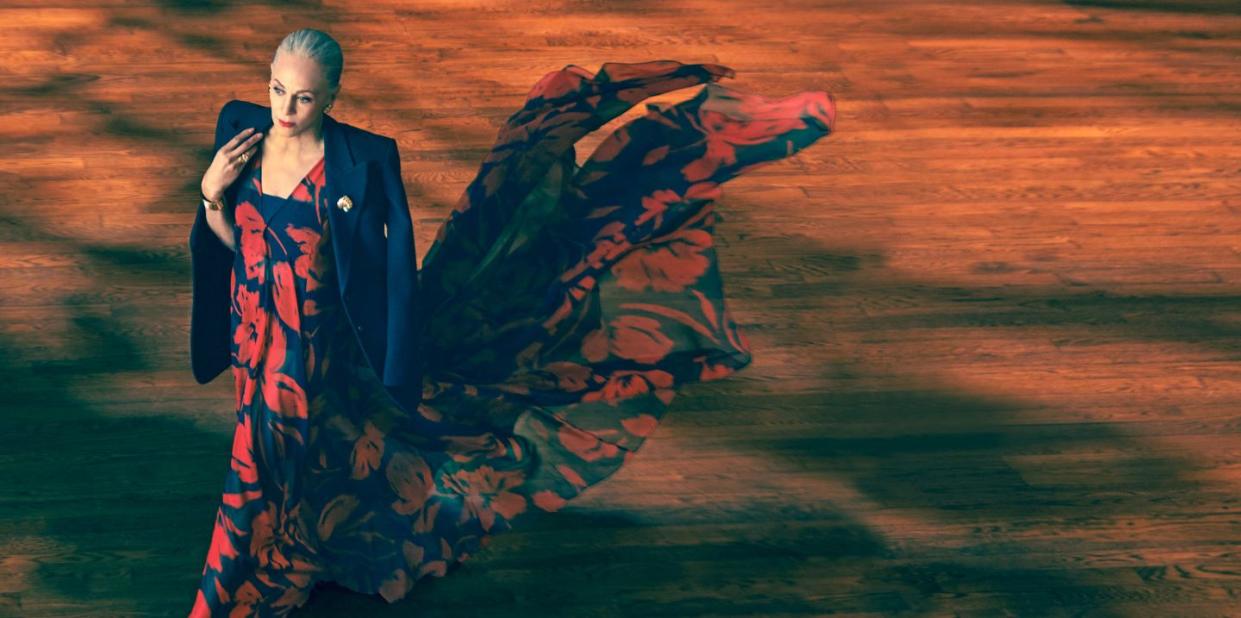
"Hearst Magazines and Yahoo may earn commission or revenue on some items through these links."
The Battle of Versailles. The term refers not to the young Marie Antoinette in a fit of pique over palace protocol, but to a fashion show for the ages. It occurred 50 years ago this November, when five masters of elegant French haute couture and five purveyors of easy American ready-to-wear staged an event in one of the world’s most extraordinary enclaves. Ostensibly, the soiree was to benefit the venue’s restoration–even the grandest of digs get dusty-musty after centuries. And indeed, it raised more than a few francs for the cause.
But the Grand Divertissement à Versailles (its official name) is remembered not for its philanthropic premise but as a watershed moment when American gusto trumped French grandeur. It resonates now as a one-night Camelot-en-France, a shining moment of ascendency for American fashion that continues to fascinate, inspiring two documentaries, a pivotal episode of Netflix’s Halston, and Tom Ford’s installation at the Metropolitan Museum’s “In America: An Anthology of Fashion.” In addition, HBO optioned critic Robin Givhan’s seminal book on the event.
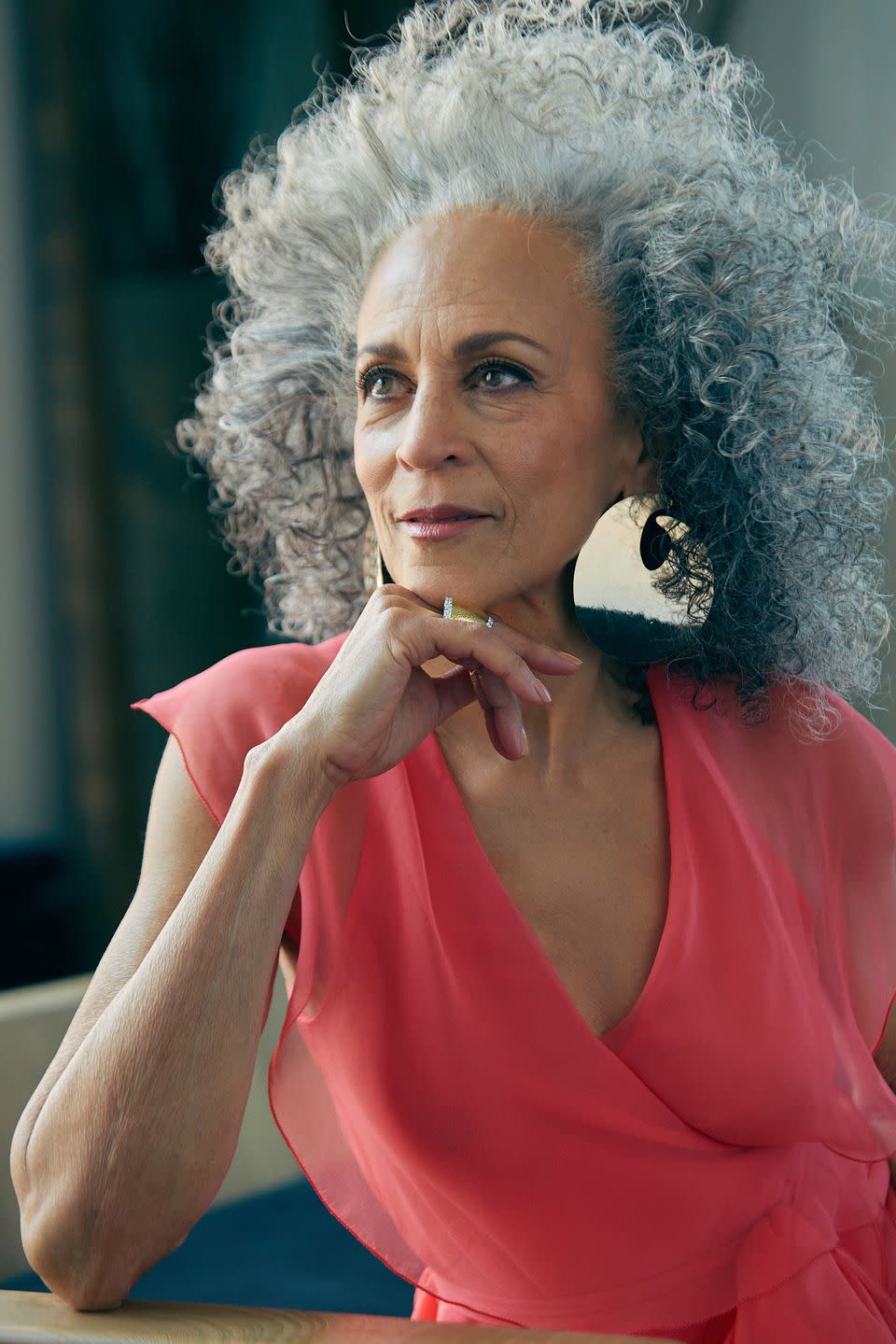
Anniversaries cause us to look back and reassess, and 50 is a big one. Also, recent collections have emphasized clothes rooted in the core traditions of American chic—practical, relaxed, polished without stuffiness—clothes such as these worn by the glorious Alva Chinn.
She was one of 10 Black models on the American roster of more than 30 who commanded the stage brilliantly, moving with a joie de vivre that captivated the audience. Like Chinn, Bethann Hardison, Pat Cleveland, Norma Jean Darden, and Billie Blair were among those who went on to major careers.
“Versailles was the beginning of American fashion being recognized as fashion,” Chinn says. “The energy we brought was new, fun, and exciting.”
The Versailles extravaganza, held in the palace’s Royal Opera (inaugurated for the 1770 wedding of Marie Antoinette and the Dauphin), was the brainchild of the intrepid public relations maven Eleanor Lambert, who by 1973 was eager to promote American fashion abroad. A social introduction to Versailles curator Gerald Van der Kemp sparked her idea for a benefit.
At the time, prêt-à-porter was emerging in France. Yves Saint Laurent had opened his first Rive Gauche boutique in 1966. But couture still ruled. And for the French, only haute would do for this unprecedented fete. Saint Laurent, Hubert de Givenchy, Emanuel Ungaro, Pierre Cardin, and the house of Christian Dior, where Marc Bohan was at the creative helm, all signed on.
Lambert drew up the American list: Oscar de la Renta, Bill Blass, Halston, and two more surprising entrants: Anne Klein, known for dressing working women (gasp!), and fast-rising star Stephen Burrows, at 30 years old the youngest of the lot. He was a Black designer whose aesthetic played to a young customer; it took root in euphoric New York City nightlife and manifested as a lot of colorful body-con jersey. Another young designer was in the wings: Donna Karan, Klein’s pregnant twentysomething right hand.
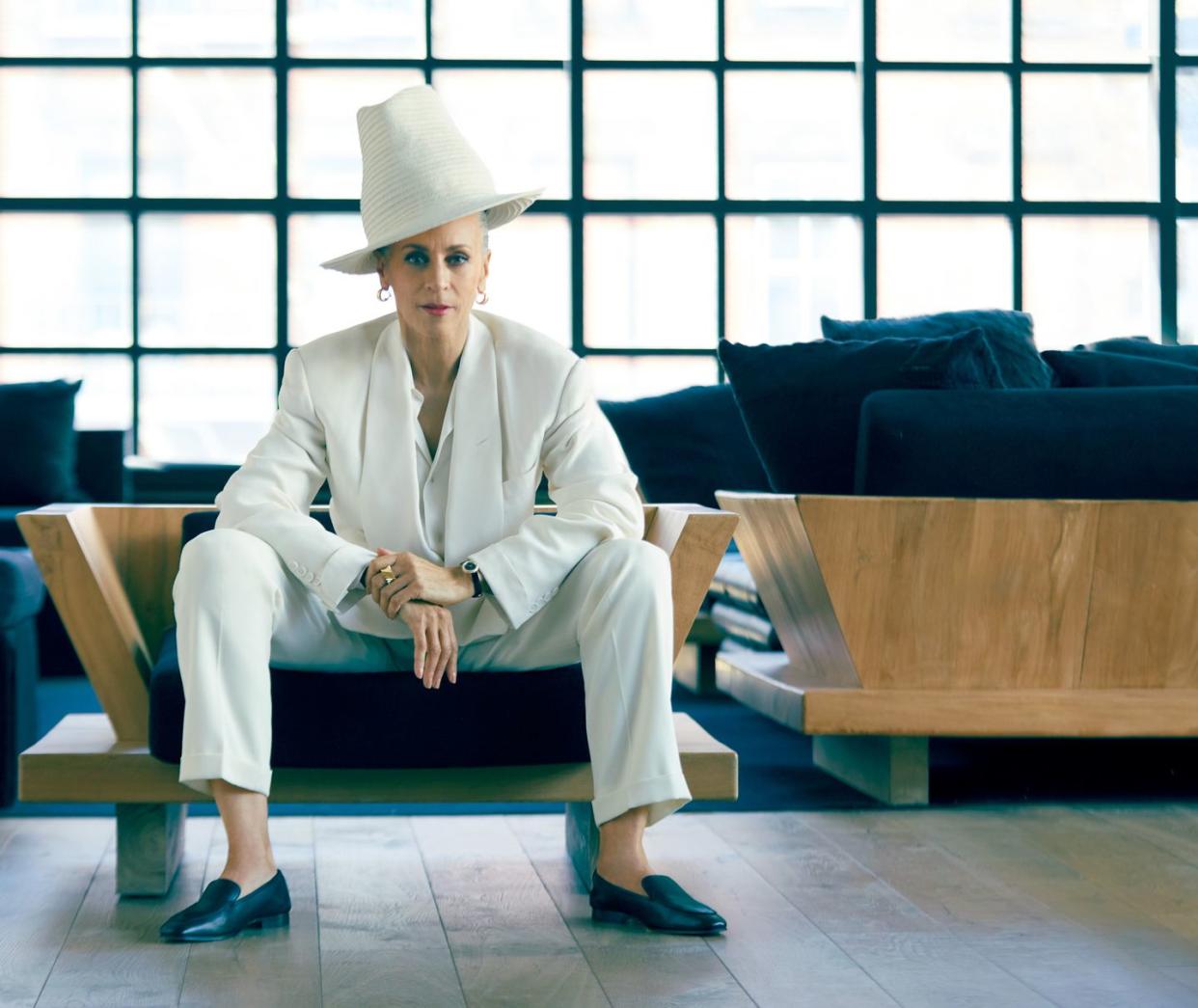
If the original idea was a kumbaya coming together to celebrate fashion and restore a world monument’s leaky ceiling, things didn’t play out that way. While covering the preparations, John B. Fairchild of Women’s Wear Daily dispensed with “Divertissement” in favor of “Battle,” and the unofficial title stuck. Game on.
The primary battle played out on the Opera stage, between the traditional ways of the French couturiers, who presented endless pageantry that ran upwards of hours, and the zippier perspective of the Americans, who together commanded the stage in 30 minutes, start to finish.
“Oh, my God!” says Karan, as if it all happened last week. “The main battle was between the French and the Americans. Underneath, it was the American battle.” Blass, de la Renta and Halston bickered throughout, particularly the last two, who clashed over whom would close the show. De la Renta won. Elsewhere there was grousing about why the hell Klein and her working woman getups were included at all.
While the American contingent may have devised its own internal hierarchy, in Paris they all felt decidedly B-list. “The French were rude,” says Chinn, noting that they monopolized the daytime rehearsal hours, forcing the Americans to practice deep into the night. But no hard feelings long-term, she adds: “I didn’t realize that I would start a career, that Versailles would give me entrée to all the Europeans that I ended up working for."
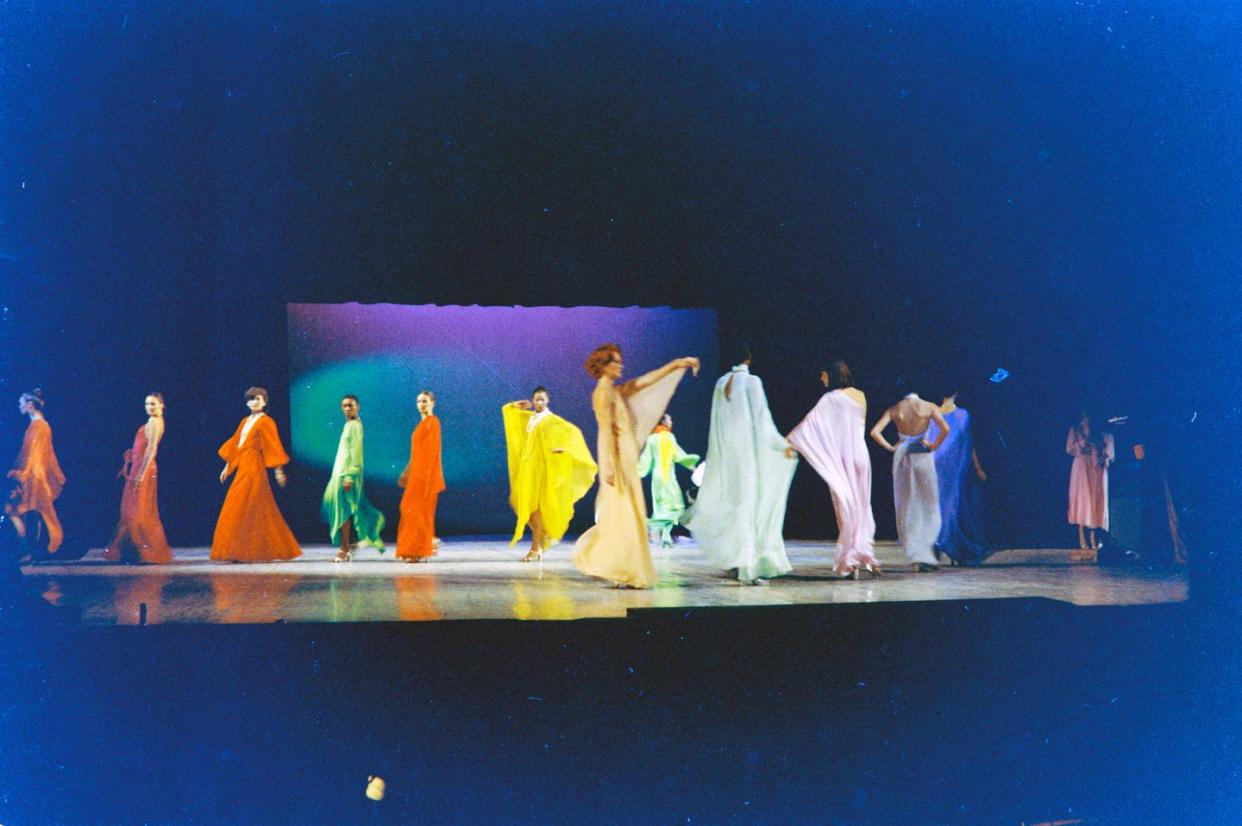
The pageantry planned by the French, who showed first, ran upward of two hours. It featured a live orchestra, elaborate sets that changed for each designer, interludes by the likes of Rudolf Nureyev and the American expat/French national treasure Josephine Baker, who donned a sheer, sparkly catsuit and did her thing at the age of 67. As for the models, they walked with the solemnity then expected of the couture genre, their demeanor more haute than happy.
By comparison, the Americans were scrappy, and plowed through various snafus. A daunting one fell on famed illustrator Joe Eula, who agreed to do the set. Unlike the French, with their big-budget floats, he devised a concept that would be both economical and easily portable from New York: a simple cloth backdrop on which he drew the Eiffel Tower. But upon arrival at the theater, he realized he’d made a very American faux pas, mistaking the measurements he’d received for inches and feet rather than meters. The muslin didn’t fit, and he had to scramble to pull together an alternative.
That oops aside, time and romance have perhaps magnified the underdog motif a bit. True, the French pulled out all the haute-worthy stops imaginable. But their counterparts weren’t exactly post-grad wannabes. Except for Klein, all had achieved some degree of celebrity beyond fashion, and all had well-respected businesses, some of significant scale. Earlier in the year, Halston scored a splashy payday when he sold his company to Norton Simon while retaining creative control. (The partnership would later go south.) From the American-industry perspective, only Klein’s presence in the lineup was questioned, given her mundane focus on clothes for the office.
In terms of showmanship, the Americans brought some guests who weren’t exactly entertainment chopped liver. Halston recruited his good friend Liza Minnelli, fresh off her Oscar win for Cabaret. She, in turn, brought in her godmother, the choreographer (and author of the famed Eloise children’s book series) Kay Thompson. Thompson had played the didactic fashion editor Maggie Prescott in Funny Face, and adapted that film’s “Bonjour Paris” for the opening number. It featured the models and male dancers bedecked in smart, feisty day clothes, while bonjour-ing the audience from the stage and dancing along with Minnelli.
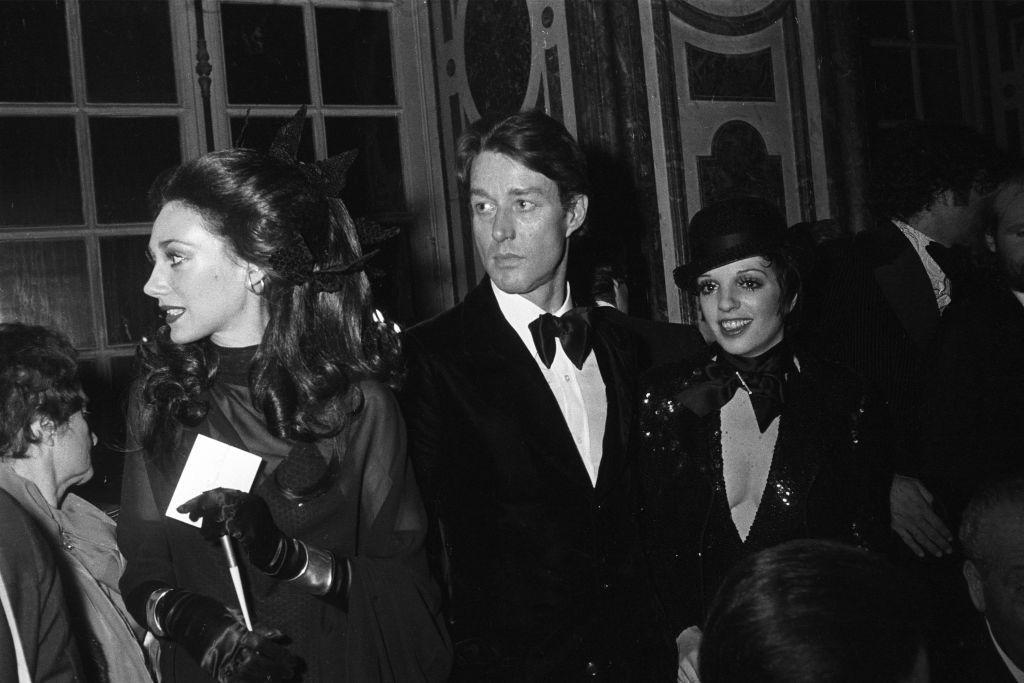
The American models moved, emoted, posed, danced. They had fun, heightening the life and currency of the clothes. By the time Minnelli belted out “Cabaret” to close the show, the tony royals, socialites, and celebrities in attendance were ecstatic. Nicole Fischelis, a Paris native and longtime fashion executive, was then a dresser for the visitors. “It was a big coup for American fashion,” she says. “There was an incredibly dynamic vibe, and the clothes were extremely modern. The French presentation was spectacularly dated.”
Says Karan, “What we did blew everybody’s brain. There’s no question about it.”
Over the years, the Battle of Versailles has taken on a mythology of its own, and some clinical elements of the story get overlooked in its David-Goliath narrative. The event presaged some now-standard aspects of show production. For example, today’s typical runway outing lasts about 12 minutes; at Versailles, five Americans showed in a total of 30. And while this wasn’t technically an itinerant show, half of its participants crossed an ocean to take part, foreshadowing the globetrotting ways of today’s luxury brands.
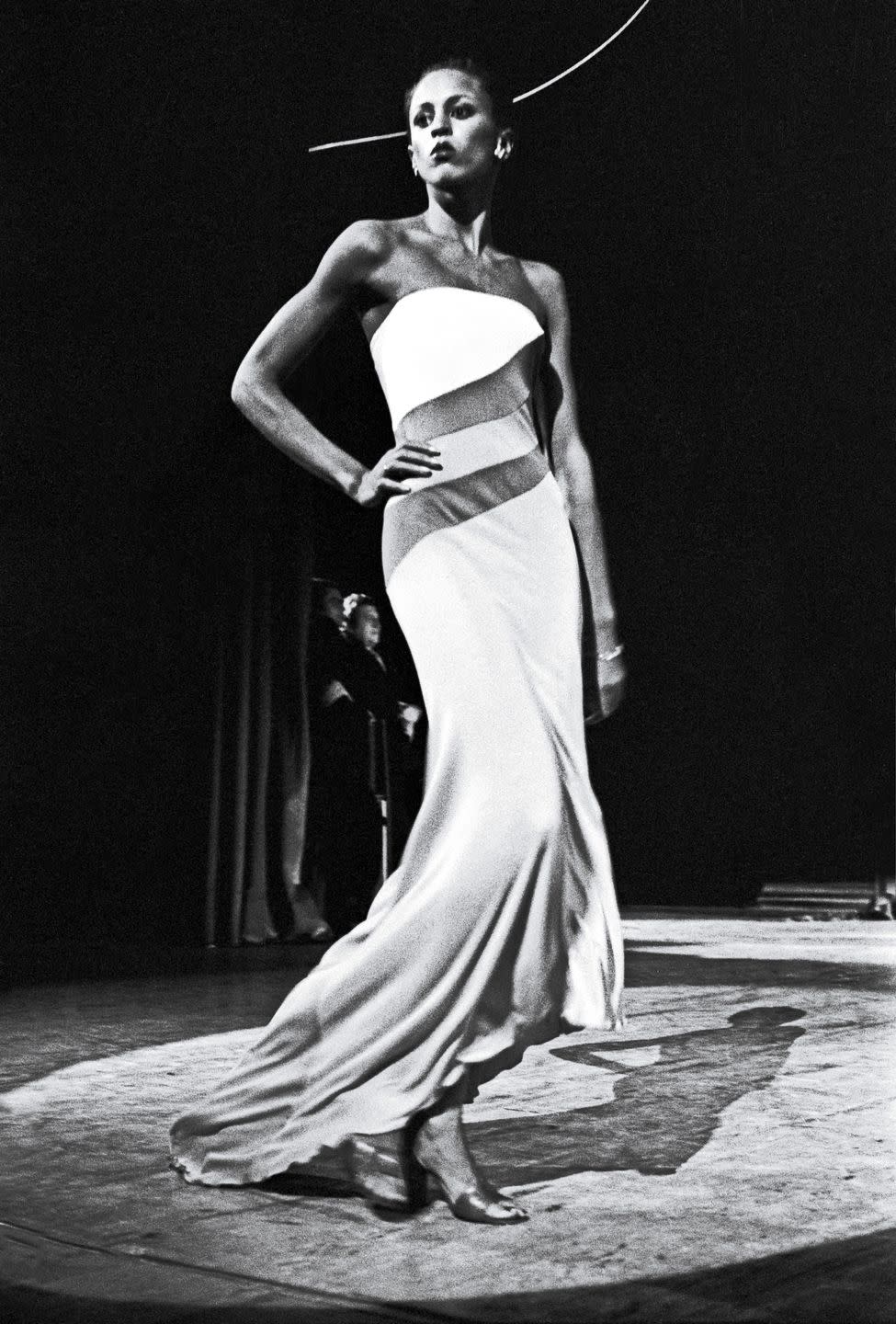
Bigger picture, Versailles trumpeted the power of mega-marketing. It was a masterwork, orchestrated brilliantly by Lambert. Through her long career (she worked into her 90s, and died in 2003, at age 100) she did as much as anyone to shape the American fashion industry. In large part, she created it. Before Lambert and Fairchild–and give or take a Claire McCardell or two–American designers were mostly unknown, backroom employees. Lambert shone a spotlight on them. She established New York Fashion Week. She founded the Coty Awards, precursor to the current awards presented by the CFDA, which she also founded. And she was integral to launching the Met Gala, then known as the Costume Institute Ball.
Yet for all the event’s resonance, American fashion has not fully realized the promise of the Battle of Versailles. The show marked the arrival of Black models as a force in fashion. They stunned and delighted with their joyful, very personal interpretations of the clothes. Hardison, now a fashion advocate and consultant, graciously shares the credit for their impact that night while acknowledging the larger cultural importance. “The models of color, we were no different than the white girls,” she says. “What we brought to it was the fact that there were so many of us. That was not [typically] seen…We were being seen five different times, for five different designers. So, it became something that was noticeable.”
The industry indeed took note. It didn’t mean instant, lasting equity for models of color, but it was a leap forward. (The idea of runway models presenting as individuals with personalities reached its apex in the Seventies and Eighties, but eventually went out of fashion. The late-Nineties waif obsession led to a stretch when many runways featured girls who resented as bland, interchangeable adolescents. Happily, today’s current top models are more diverse and more in control of their images than ever, thanks in part to their savvy use of social media.)
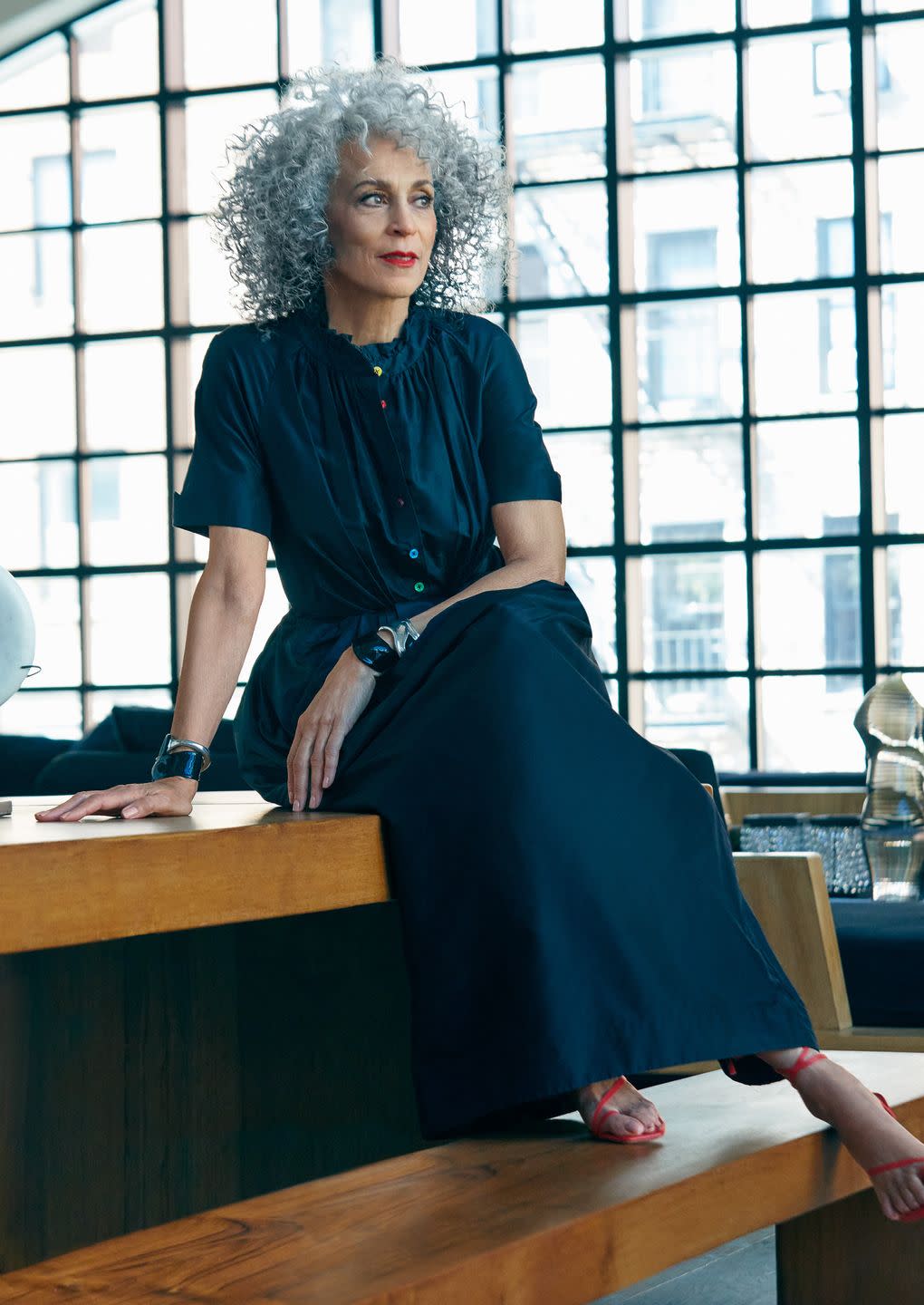
As for designers, American fashion has not achieved parity with Europe, whether in reputation or brand muscle. Today three of the five French houses that showed that day are owned by global luxury groups—Dior and Givenchy by LVMH, and Saint Laurent by Kering. Among the Americans, only the Oscar de la Renta brand remains active in the luxury arena, where financing is always a challenge and longevity never a sure thing. “We used to have angels in the industry—the garmentos,” Hardison says. “We don’t have those people anymore.”
Perhaps not. But American fashion is brimming with talented, determined designers across generations, from Aurora James and Christopher John Rogers to Michael Kors and Ralph Lauren. Despite the variety of their aesthetics, overwhelmingly they continue to believe in and deliver beautiful clothes for the real world. Chic, functional clothes that can be worn with ease and a touch of swagger, in which women can express their best selves, just as the groundbreaking Chinn, Hardison, and their catwalk colleagues did on that magical night 50 years ago.
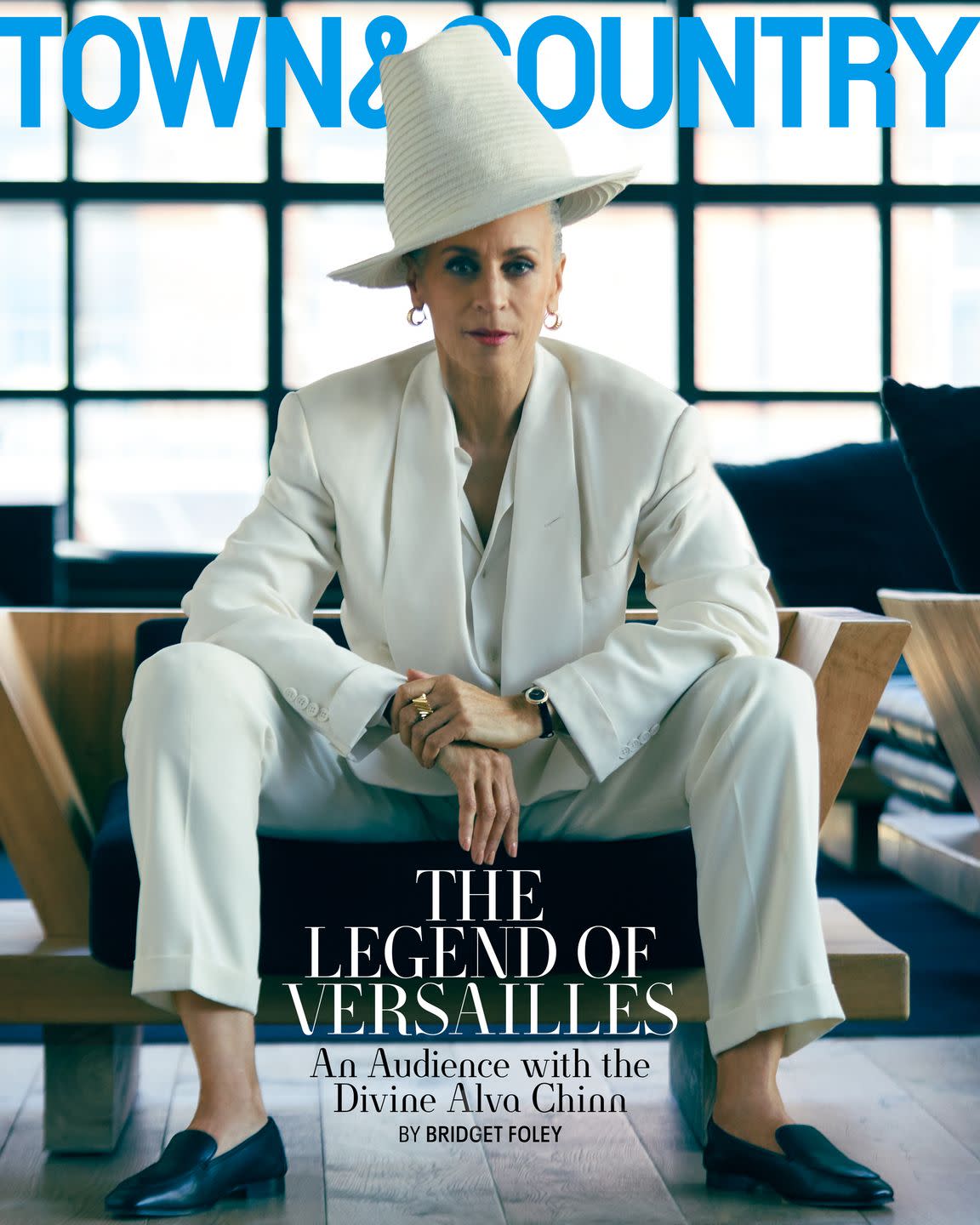
Photos by Walter Chin. Styled by Anya Ziourova.
Hair by Italo Gregorio at Bryan Bantry Agency. Makeup by Genevieve Herr for Sally Harlor. Nails by Kiyo Okada for Chanel Le Vernis at Kramer + Kramer. Model: Alva Chinn at Maggie Inc. Casting by Alicia Bridgewater at Casting by a.com. Produced by Cerutti + Co. Shot on location at Urban Zen at Stephan Weiss Studio.
In the top image: Michael Kors Collection blazer ($2,290) and gown ($5,490); The Row slides ($690); Belperron earrings ($43,500), brooch ($55,000), and ring ($42,500); Beck cuff ($34,500).
This story appears in the May 2023 issue of Town & Country. SUBSCRIBE NOW
You Might Also Like
